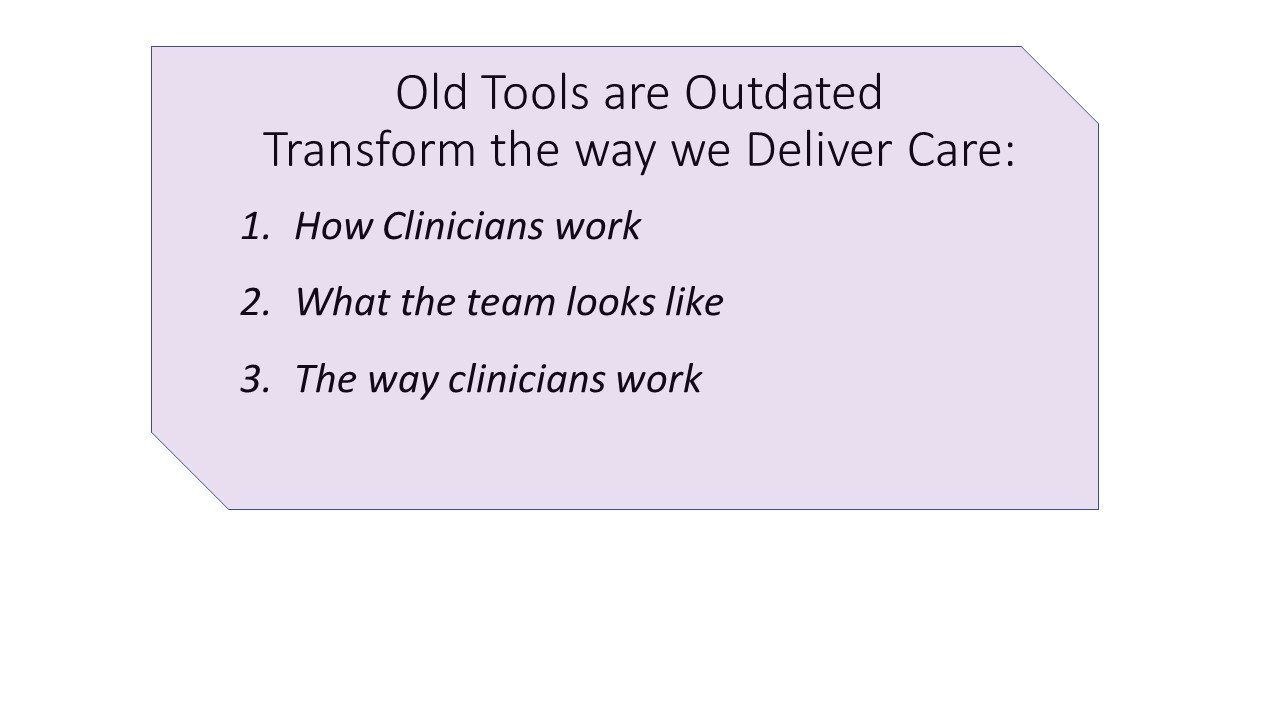The Healthcare Talent Emergency
SUMMARY:
46% of clinicians report high levels of burnout leading to attrition
70% of patients are worried the healthcare shortage may affect their own health
The shortage is a complex problem with multiple underlying causes, which means there is not one simple answer
BACKGROUND
Staff shortages have been associated with increased rates of:
Infections
Patient safety events
Risk to quality care
Risk to self care
The old approach to healthcare shortages of overtime and staff agency support have significant limitations and have outlived their usefulness.
The path forward is to transform the way we deliver care.
This reimagined care delivery process will be based on an ongoing investment by leadership in people and technology to change:
How clinicians work
What the team looks like
The way they work
REVIEW:
REIMAGINING CARE DELIVERY:
1. Redesign the Work:
Eliminate workflow inefficiencies:
Technology to give back time to clinicians
Automate low value tasks
Administrative and insurance related tasks
EHR Optimization
Decrease number of “clicks”
EHR tasks consuming disproportionate amount of time
Virtual Care in Collaboration with Bedside
Identify tasks best done remotely vs only bedside can do
Senior remote clinicians aiding junior bedside clinicians at bedside (especially during evening hours)
Drive best practices
Early identification and intervention of patient deterioration
Redesign Work Teams
Move from patient ratios to an acuity based system of patient disease burden
Multidisciplinary care teams directing the Right Message to the Right Person
Job flexibility with:
Flexible shifts
Job Sharing
2. Invest in Your People:
We cannot automate our way out of this crisis
Leaders must recognize and accommodate cultural, generational, gender and life stage differences
Competitive total reward packages – monetary and non-monetary (gratitude days, well being resources)
Opportunities for Career Development and Mobility
Employee well being and self care
It’s Okay not to be Okay
3. Leadership Must Regain Trust
Loss of trust in leadership shown to lead to higher rates of burnout
2 types of trust:
To do the right thing for patients
To do the right thing for staff
Involve frontline clinicians in programs affective workflows
Share the design and implementation of programs
CONCLUSIONS:
Committing a long term investment to reinvent are delivery in a time of downward pressure on margins is incredibly hard.
To retain and attract a clinical workforce, healthcare systems have to rebuild and restor meaning, value and purpose into care delivery.
It is possible to attack the organizational and system factors contributing to burnout.
Redesigned improvement programs will improve population health, reduce burnout and optimize costs.

